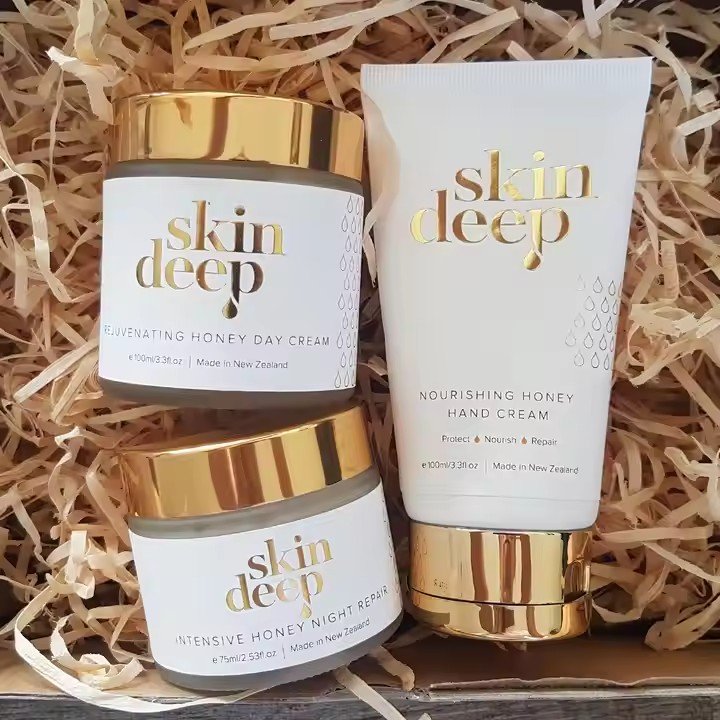- Create a distinctive bottle shape to break visual conventions
The bottle is the core of perfume packaging — a unique shape can instantly capture attention. Avoid common silhouettes like circles or squares; instead, tailor the design to match the perfume’s scent style.
Fresh floral fragrances suit smooth, organic forms such as droplet-shaped or petal-shaped bottles, with flowing lines that echo a natural, light feel.
Woody or oriental scents work well with angular geometric bottles in a matte finish to express depth and sophistication.
Niche or artisan perfumes can experiment with irregular or asymmetrical forms — trapezoidal, spiral, or creatively cut shapes that enhance artistic character.
For proportion, maintain a balanced ratio between the neck and body — the golden ratio (1:1.618) brings visual harmony. Mini or travel versions can adopt capsule or cylindrical forms for portability.
Add tactile detail to the bottle, such as embossed floral textures, frosted surfaces, or variable glass thickness to create layered light refraction — avoiding flat, monotonous surfaces.

- Refine material combinations to enhance texture and touch
Material choice defines both the luxury and sensory experience of perfume packaging. Glass remains the mainstream option:
Clear glass suits fresh scents and can be lightly frosted to soften light.
Amber or dark green glass protects perfume ingredients while evoking a vintage tone — ideal for woody or rich floral fragrances.
Crystal glass showcases brilliance through precise cutting and is perfect for high-end perfumes.
The cap should complement the bottle:
Metal caps (gold-plated or matte silver) paired with a leather gasket add refinement.
Wooden caps bring a natural texture, suitable for neutral or rustic fragrances.
Silicone or soft plastic caps create a lightweight feel, appealing to younger users.
Add thoughtful details at the bottle–cap junction — such as a magnetic closure for smooth usability and a satisfying “click,” or a threaded twist design with fine grooves to enrich tactile appeal.
- Use color harmonization to match the fragrance tone and strengthen brand recall
Color conveys the mood of a perfume and must align with its scent profile and brand positioning:
Fresh scents (citrus, aquatic) pair with pale tones like sky blue, mint green, or ivory, complemented by transparent materials for a clean, airy effect.
Rich floral notes (rose, jasmine) suit Morandi tones (dusty pink, misty blue) or low-saturation warm hues (peach, apricot) — avoiding overly vivid colors that can look cheap.
Woody and oriental scents favor darker tones (black, deep brown, burgundy) with metallic accents to evoke mystery and sophistication.
Experiment with contrasting yet harmonious color palettes — such as a light gray bottle with a bright yellow cap — or gradient designs that fade from deep to light tones, enhancing visual dynamism.
Use small highlights like metallic or fluorescent accents — e.g., gold-trimmed caps or silver-foil logos — to boost recognizability under lighting, but keep embellishment areas restrained for visual balance.
- Elevate elegance and storytelling through thoughtful detailing
Details are the soul of beautiful packaging — they convey craftsmanship and brand narrative.
The logo should be concise and prominent, using foil stamping, UV printing, or embossing on the bottle’s front or cap top; niche brands can use debossed or raised designs for added tactility and artistic feel.
Replace ordinary stickers with premium label materials like leather patches, metal nameplates, or woven tags, with edge finishing or rough cuts for uniqueness. Keep only essential information (brand name, fragrance note, capacity) in minimalist serif or sans-serif fonts to maintain visual balance.
Add hidden details for surprise and emotional resonance — such as engraved motifs on the bottle base, inspirational scent phrases inside the cap, or fragrance story cards inside the box — to deepen user connection and brand charm. - Align with user preferences and usage scenarios for differentiated appeal
Design should reflect both the intended use and target audience.
For young female consumers, adopt a cute, romantic style — rounded bottles with bows or pearl ornaments in pastel colors, perfect for daily or date scenarios.
For men’s fragrances, use clean, structured designs with black or gray bottles and straight lines, minimizing decoration for a calm, mature tone.
Unisex perfumes benefit from gender-neutral designs — minimalist forms in monochrome (black, white, gray) that suit varied personalities and occasions.
For gift sets, emphasize overall harmony: choose rigid cardboard, leather, or velvet boxes with sponge inserts and ribbon accents. Add custom elements (engraving, personalized motifs) to enhance gifting ritual and exclusivity.
For travel versions, prioritize compactness and portability: use spray or rollerball bottles with simple paper or transparent cases for easy carry.

- Balance aesthetics with eco-friendliness and practicality
Attractive packaging should also embody sustainability and functionality. Choose eco-friendly materials such as recyclable glass, recycled paper, or biodegradable plastics, and minimize over-packaging. This approach not only aligns with modern environmental values but also elevates the brand’s long-term image.


